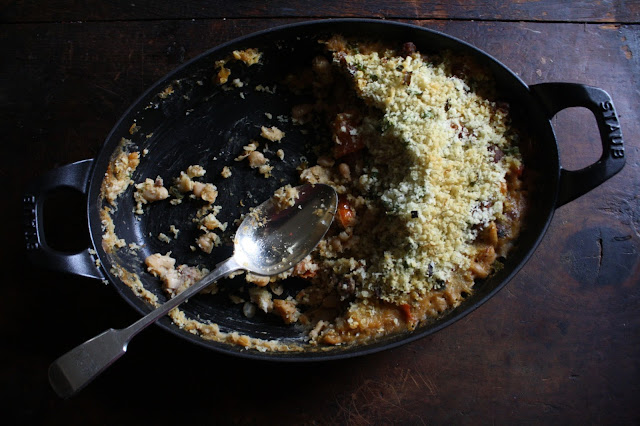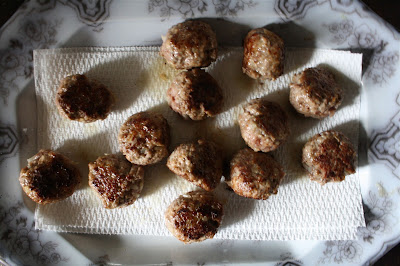
The holiday meal here included several new incredibly, definitely on the making future appearances list, delicious recipes. Yes, I decided to take some (calculated) risks for the meal I wanted to ascend to the 'best ever' category (pretty sure this goal was accomplished). Considering how wordy I can be in some of my blog posts, I have no other option but to share them one at a time. Besides, there is much to be said for pacing oneself (or so some say). There were two new appetizers served for Christmas dinner this year. A Pink Peppercorn Gravlax and the Chipotle and Rosemary Roasted Nuts. The decision regarding which one to share with you first wasn't one that had me tossing and turning in my sleep. It was one of those no-brainer decisions. While the roasted nuts recipe was also well received (coming soon aka no later than next week), the Pink Peppercorn Gravlax was so incredibly over-the-top, amazing. I would be a wicked tease if I made you wait for it or promised to share it with you in the vague future called sometime. Over the course of the almost three years of this blog's life, I have tried hard to earn your 'culinary' trust. So it would be more than a bit foolish and reckless of me to do anything to cause it to shatter, even just a little, as building and keeping trust, including yours, are one of those things that matters to me.

In the spirit of full disclosure I was a little nervous making this Pink Peppercorn Gravlax. Mostly because it was my first time making it. But I took a deep breath and thought 'you can do this' (now if only that message was received on days I want to run continuously and at a fast for me, steady pace when going out for a long run!). For those of you who may have a little trepidation at the thought of making gravlax for the first time or using this recipe instead of the one you have been relying on, let it go! This sinfully delicious dish may be one of easiest recipes posted to the blog in recent weeks.
Lox, smoked salmon, and gravlax have sometimes been used interchangeably to describe raw, cured fish. However, there is actually difference between them. HuffPost Taste wrote a
great little article to help us become more salmon savvy. Very simply, gravlax is salmon that has been cured with salt and sugar and infused with the flavor of fresh dill, spices, and sometimes other aromatics (like aquavit, gin, or vodka). The origin of the word gravlax comes from the combination of two Scandinavian words. Gravad ('to bury, to dig) and lax ('salmon'). The earliest version of gravlax was made by Scandinavian fisherman in the 8th century who used a fermentation method (wrapped in birch bark or pine needles, the salmon was buried in the sand above the tide line) to preserve it. While the process of making gravlax has changed considerably over time, the name remained.

Today we often consider the buttery, silky texture of cured salmon one of the more life's more luxurious foods. And it may be somewhat surprising that this delicacy could have such a relatively straight-forward, ridiculously easy preparation process. Instead of burying the salmon in the sand, it is buried in dry brine and a generous amount of fresh dill.
If there was one must serve appetizer for New Year's Eve, it should be silky textured gravlax. And as an added bonus you can serve any leftovers on bagels slathered in cream cheese on New Year's Day. This Pink Peppercorn Gravlax may be the perfect way for your palate to end and/or begin the new year.
Choose a store or vendor who sells high quality fresh salmon. Avoid using frozen fish as freezing adversely affects the texture of cured fish. The fresher and fattier the salmon, the better your gravlax will taste. In other words, choose the highest quality salmon possible. For this Pink Peppercorn Gravlax I used a two pound piece of fresh Icelandic salmon. For best results, buy the salmon the same day you begin the curing process.
Spices add a dimension of flavor to the cured salmon. Coriander and caraway pair well with the fresh dill. Pink peppercorns and fennel seeds add another layer of flavor to the dry brine mixture. Matt Jennings recipe called for the use of fennel pollen (completely new to me, but then sometimes I can be a little behind the food trends). For those of you more foodie savvy than me, use two tablespoons of the fennel pollen instead of the one tablespoon of fennel seeds used in my slightly adapted version of his recipe.

To bring out their maximum flavor, the pink peppercorns, coriander seeds, caraway seeds, and fennel seeds are toasted on the stove. The aroma of the spices will be released in approximately two minutes when cooked in a small pan over medium heat. Once allowed to cool, they are coarsely ground in a spice grinder, mortar, or small food processor (I used the later one with great success).
Salt and sugar are critical to the curing process as they draw the moisture out of the fish through osmosis. While scanning gravlax recipes, I discovered the recommended ratio of salt to sugar used in the dry brine ranged from 1:1 to 2:1 with the higher salt to sugar recipe being the more preferred.
As a side note, some recipes for gravlax call for the use either citrus or alcohol. Several chefs strongly advised against the use of the juice from citrus as the acid would not only cook the fish like a ceviche but would toughen the fish's exterior in a less than pleasant way. There was less consensus on the use of alcohol, however, most suggested using spices to give flavor to the salmon.

In retrospect I should have weighed my large bunch of dill in order to give a bit more specificity to the recipe ingredients considering the dill is an essential flavor ingredient for the gravlax. I am keeping my fingers crossed the visual here will give you some idea of what a 'large bunch' means. Because with so many 'plates in the air' getting ready for Christmas, I failed to attend to that little, but important detail. So please forgive me. Even in the winter, I can still find large bunches of fresh herbs at a couple of the food stores I frequent. Hopefully you can find them too as buying those prepackaged containers of fresh herbs will not only set you back quite a bit, but they are slightly more fragile.

The curing process for the Pink Peppercorn Gravlax is three days. Yes, three days. It all begins with giving the salmon a 10 minute water bath (in a mixture of cold water and 2 Tablespoons of kosher salt) in order to wash off any juices on the surface of the fish, which might cause it develop unpleasant aromas prematurely.
Both the top and bottom of the salmon are coated in the salt-sugar-spice mixture and surrounded by dill before being tightly wrapped with plastic wrap. After placing the wrapped brine-dill coated salmon on a large baking sheet, it is topped with a second baking pan weighted down with canned goods (or heavy cast irons pans would work as well) before going into the refrigerator. Weighing down the salmon will help to draw out moisture. After 24 hours, the salmon is removed from the refrigerator and drained for all accumulated liquid. Squeezing as much liquid out of the dill as possible without losing most of the spices was a bit of trick, but somehow it all managed to work out. The salmon is then tightly rewrapped in the dill and spices with fresh plastic wrap and returned to the refrigerator (again topped with a weighted down baking sheet) for two days. Why 2 days? At the end of three days of curing, the fish becomes slightly more firm and perfect for slicing into thin slices. You will be richly rewarded with gravlax perfection if you give the salmon three days of curing.

The gravlax needs to be sliced on a flat surface and cut on the bias with a really sharp knife. If you knife is dull your gravlax will tear into small pieces versus delicate strips.

Serve the gravlax with bite sized strips or squares of pumpernickel or rye bread along with some sour cream or a mustard dill sauce (if serving as an appetizer). For breakfast or brunch, serve with bagels and softened cream cheese.
A better translation for gravlax would be luxurious although more than likely the 8th century Vikings viewed this cured fish as a necessity for surviving those long cold Scandinavian winters. If you have considered gravlax an expensive, occasional luxury, this Pink Peppercorn Gravlax should be enough to cause you to make a paradigm shift. Remember, not everything considered luxurious is a luxury (my new mantra for 2016). Now that I discovered how insanely delicious it is (as well as how relatively easy it is to make), this impressive dill-cured salmon will be making regular appearances at gatherings with family and friends.
Recipe
Pink Peppercorn Gravlax (slight adaptation to chef Matt Jennings recipe for Pink Peppercorn and Fennel Gravlax as shared in Food and Wine, December 2015)
Ingredients
1/2 cup plus 2 Tablespoons kosher salt
2 pound piece of skin-on center-cut fresh salmon fillet, pinbones removed (recommend either Icelandic or Wild Salmon)
2 Tablespoons pink peppercorns
2 Tablespoons caraway seeds
2 Tablespoons coriander seeds
1 Tablespoon fennel seeds (or 2 Tablespoons fennel pollen)
1 teaspoon white pepper
1/4 cup granulated sugar
1 large bunch of fresh dill
Pumpernickel bread, rye bread, and/or crackers for serving
Directions
1. Fill a large bowl or baking dish with cold water. Add 2 Tablespoons of the kosher salt. Stir until salt is dissolved. Submerge salmon in the water and let stand for 10 minutes. Drain fish and pat dry with paper towels.
2. In a small heavy skillet, toast the pink peppercorns, caraway seeds, coriander seeds, and fennel seeds over medium heat, stirring until very fragrant (approximately 2 minutes). Cool slightly and then coarsely grind in spice grinder, mortar, or small food processor. Transfer spice mixture to small bowl. Stir in white pepper, granulated sugar, and remaining 1/2 cup of kosher salt until well combined. NOTE: If using fennel pollen, add to the toasted spices along with the white pepper, granulated sugar and kosher salt.
3. Line a large rimmed baking sheet with plastic wrap. Arrange half of the dill down the center of the baking sheet.
4. Sprinkle half of the spice mixture over the dill, then top with salmon (skin side down).
5. Sprinkle remaining spice mixture evenly over salmon and top with remaining half of dill.
6. Wrap salmon tightly in plastic wrap. Place skin side down on the baking sheet. Top with a second baking sheet and heavy canned goods (or cast iron pans) to weigh it down. Refrigerate for 24 hours.
7. Unwrap the fish and drain the liquid. Squeeze moisture out of the dill (being careful not to lose too many of the spices) and place back on lightly patted dry salmon. Rewrap salmon with clean sheets of plastic wrap. Place freshly wrapped salmon, skin side up on baking sheet.
8. Top with second baking sheet and and heavy canned goods (or cast iron pans) to weigh it down. Refrigerate for 2 days or until flesh feels firm in the center.
9. Rinse off salmon, pat it dry and thinly slice.
10. Serve with rye crackers, sour cream, capers, sliced red onions, and/or a mustard sauce. If serving for breakfast, serve with bagels and softened cream cheese.
Note: Keep gravlax well wrapped and chilled in the refrigerator. Will last up to 5 but not more than 7 days.





















































